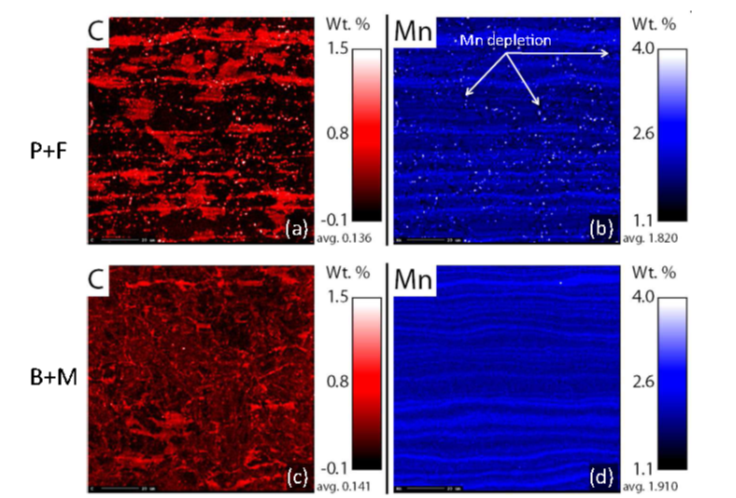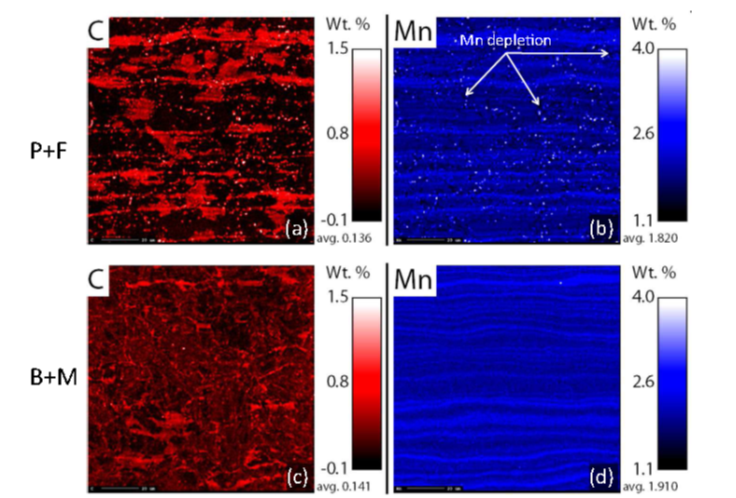Alloying effects on microstructure formation of dual phase steels
In dual-phase (DP) steels, inherited microstructures and elemental distributions affect the kinetics and morphology of phase transformation phenomena and the mechanical properties of the final material. In order to study the inheritance process, we selected two model materials with the same average DP steel composition but with different initial microstructures, created by coiling at different temperatures after hot rolling. These samples were submitted to a DP-steel heat treatment consisting of a short isothermal annealing in the pure austenite region and a quenching process.
The evolution of microstructure, chemical composition and mechanical properties (hardness) during this treatment was investigated. The initial samples had a bainitic–martensitic (B + M) microstructure for the material coiled at lower temperature and a ferritic–pearlitic (P + F) microstructure for that coiled at higher temperature. The P + F microstructure had a much more inhomogeneous distribution of substitutional elements (in particular of Mn) and of carbon. After complete heat treatment, both materials showed a typical DP microstructure (martensite islands embedded in ferrite) but the P + F material showed lower hardness compared to the B + M material. It was found that the inhomogeneous elemental distribution prevailed in the P + F material.
The inheritance process was studied by combining measurements of the elemental distribution by Wavelength-Dispersive X-ray spectroscopy (WDX), simulations of the evolution of the elemental composition via the DICTRA (diffusion-controlled reactions) computer programme, dilatometry to observe the kinetics of phase transformation, and observation and quantification of the microstructures by Electron Backscatter Diffraction (EBSD) measurements. For the P + F material it was found that the alpha-gamma transformation during annealing is slowed down in regions of lower Mn content and is therefore not completed. During the subsequent cooling the incompletely autenitized material does not require ferrite nucleation and the gamma-alpha transformation starts at relative high temperatures. For B + M, in contrast, nucleation of ferrite is needed and the transformation starts at lower temperatures. As a result the B + M material develops a higher martensite content as well as a higher density of geometrically necessary dislocations (GNDs). It is speculated that for the B + M material the gamma-alpha transformation occurs through a bainitic (i.e. partly displacive) process while the transformation at higher temperatures in the P + F material proceeds exclusively in a diffusive way.

Fig: WDX measurement of P + F (a and b) and B + M (c and d) in hot-rolled and coiled conditions (Point 1 in Fig. 1). Measurement conditions: 300 nm step size, 40 nA beam current, 12 kV, 1 detector for C and 2 detectors for Mn.
